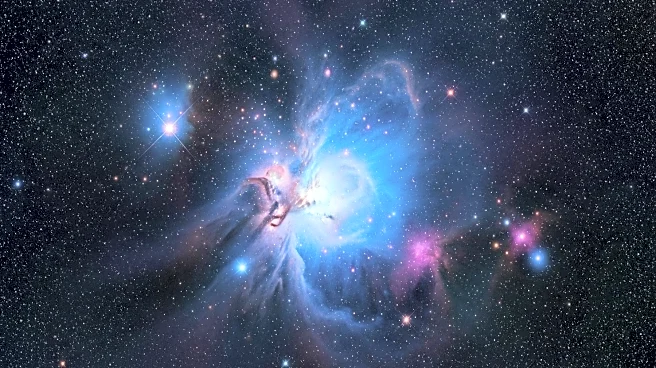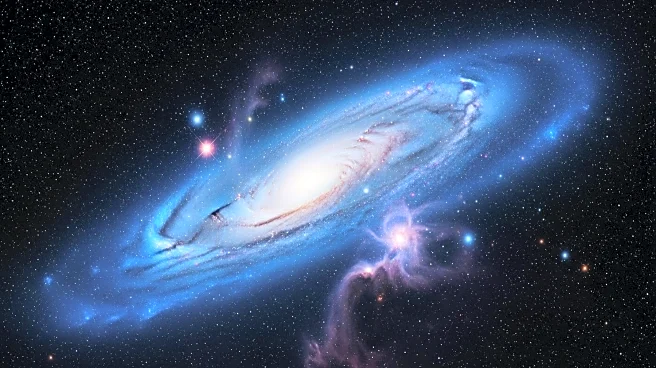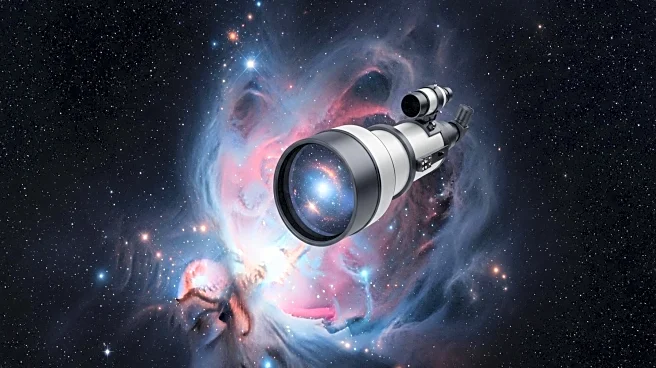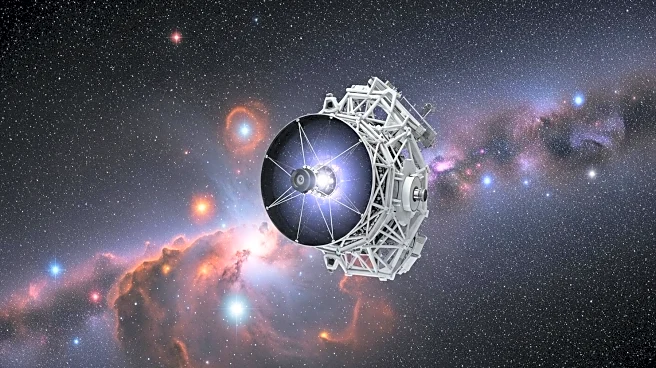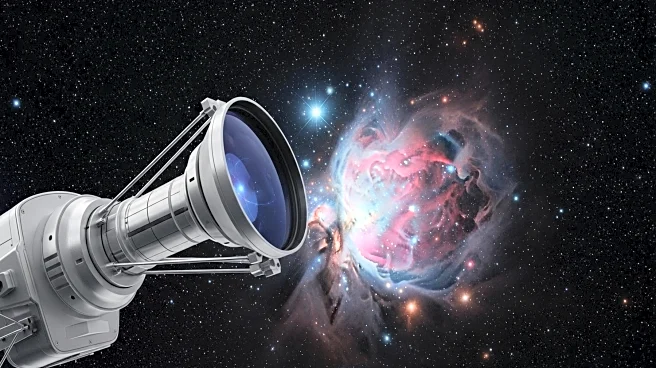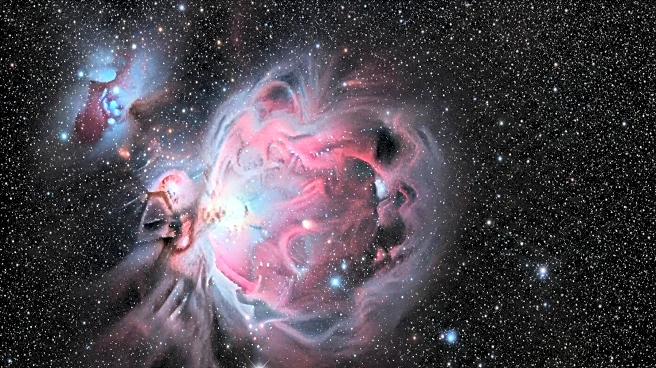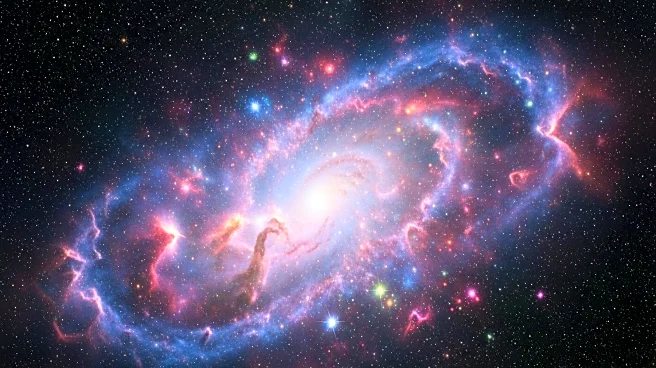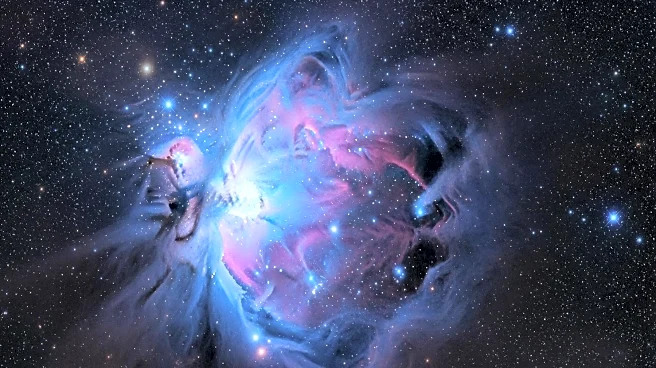What's Happening?
The James Webb Space Telescope (JWST) has captured new images of Sagittarius B2, a massive molecular cloud located 25,000 light-years away in the constellation Sagittarius. This region, known for its rich molecular material, is a significant site for star formation in the Milky Way. The JWST's Near-Infrared Camera (NIRCam) and Mid-Infrared Instrument (MIRI) have provided detailed images showing stars shining through clouds of gas and dust. The observations aim to uncover why Sagittarius B2 is more productive in star formation compared to other regions in the galactic center. A particularly bright, red area within the cloud, rich in molecular material, may hold clues to this phenomenon.
Why It's Important?
Understanding the star formation process in Sagittarius B2 could reshape current theories about galaxy evolution and growth. The findings may provide insights into the conditions that lead to prolific star formation, which is crucial for understanding the lifecycle of galaxies. This research could also enhance knowledge about the distribution of molecular material in the galaxy, potentially impacting future astronomical studies and models.
What's Next?
Scientists plan to analyze the new data from the JWST to determine the duration of star formation in Sagittarius B2 and identify any specific events that may have triggered its high productivity. This ongoing research could lead to a deeper understanding of the mechanisms driving star formation in the Milky Way.

